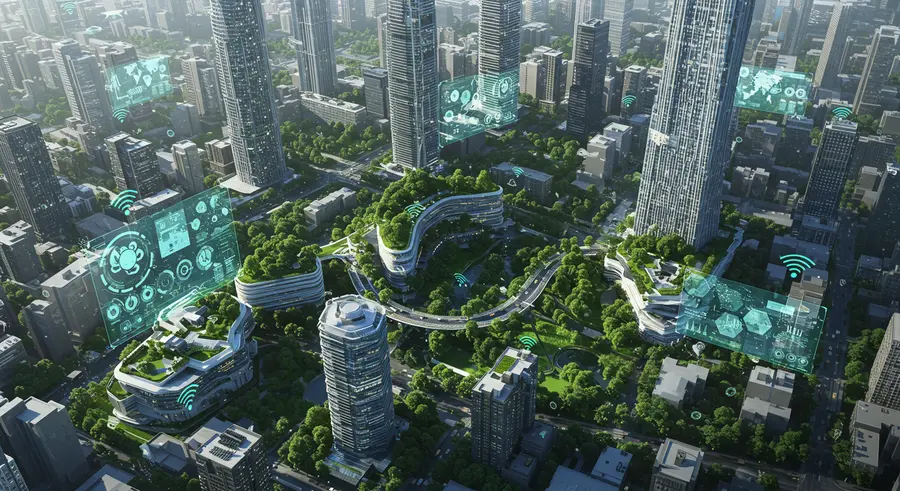Appearance

Welcome, innovators and urban planners! 👋 Today, we're taking a closer look at how Edge Computing is not just a technological buzzword, but a pivotal force in shaping the future of our urban environments. Specifically, we'll explore its transformative role in creating smarter cities and enabling highly effective environmental monitoring. Get ready to discover how bringing computation closer to the source of data is making our cities more responsive, efficient, and sustainable!
💡 What is Edge Computing, and Why is it Essential for Smart Cities?
At its core, edge computing is a distributed computing paradigm that moves data processing and storage closer to the source of data generation—the "edge" of the network. Think of it as placing mini-data centers right where the action happens: on streetlights, in public transport, within smart buildings, and alongside environmental sensors.
Why is this crucial for smart cities? Traditional cloud computing, while powerful, can introduce latency when massive amounts of data need to travel back and forth to centralized data centers. In a smart city, where real-time decisions can mean the difference between smooth traffic flow and gridlock, or immediate pollution alerts versus delayed responses, every millisecond counts. Edge computing tackles this by:
- Minimizing Latency: Data is processed locally, near the sensors and devices that generate it. This enables instantaneous analysis and rapid response times, critical for dynamic urban systems.
- Reducing Bandwidth Consumption: Instead of sending raw, voluminous data to the cloud, edge devices can pre-process, filter, and aggregate information. Only essential data is then transmitted, significantly reducing network strain and costs.
- Enhancing Reliability: Local processing reduces reliance on continuous cloud connectivity, ensuring that critical applications can function even during network disruptions.
- Boosting Security: Processing sensitive data at the edge can enhance privacy and security by limiting its exposure to broader networks.
🌱 Edge Computing in Environmental Monitoring: A Breath of Fresh Air
One of the most impactful applications of edge computing in smart cities is in environmental monitoring. Imagine a city equipped with an intricate network of sensors detecting air quality, noise pollution, water purity, and even real-time energy consumption.
Here's how edge computing revolutionizes this vital area:
- Real-time Pollution Tracking: Sensors equipped with edge capabilities can constantly monitor pollutants like PM2.5, CO2, and ozone. When levels exceed thresholds, edge devices can immediately trigger alerts to city officials or public displays, enabling rapid intervention and informing citizens. For instance, in a densely populated area, edge-powered sensors can detect a sudden spike in vehicle emissions and recommend alternative traffic routes instantly.
- Optimized Resource Management: Smart grids leverage edge computing to monitor energy consumption patterns in real-time. Edge devices can adjust power distribution based on demand, identify inefficiencies, and even integrate renewable energy sources more effectively, leading to significant energy savings and a reduced carbon footprint.
- Water Quality Assurance: Edge-enabled sensors deployed in rivers, lakes, and urban water systems can detect contaminants or abnormal changes in water parameters instantly. This allows for immediate action to prevent widespread contamination and protect public health.
- Noise Pollution Mapping: Cities can deploy edge devices to map noise levels across different districts. This data helps urban planners identify noise hotspots, enforce regulations, and design quieter, more livable spaces.
- Early Warning Systems for Natural Disasters: While more complex, edge computing can contribute to early warning systems for events like floods or wildfires by processing data from weather sensors, water levels, and even satellite imagery at the local level for faster anomaly detection.
🔗 Bridging the Gap: Edge Computing and IoT Synergy
The Internet of Things (IoT) is the backbone of smart cities, with billions of connected devices generating vast amounts of data. Edge computing acts as the intelligent bridge, allowing these IoT devices to become more autonomous and efficient. By processing data locally, IoT devices can make quicker, more informed decisions without constant reliance on cloud communication. This synergy is fundamental to unlocking the full potential of smart city initiatives.
To learn more about the broader applications and benefits of this transformative technology, check out our detailed article on Use Cases and Benefits of Edge Computing.
🚀 The Future is at the Edge
As our cities grow denser and our need for real-time insights becomes more critical, edge computing will only become more indispensable. It empowers urban centers to become truly "smart" – not just connected, but intelligent, responsive, and ultimately, more sustainable for future generations.
What are your thoughts on the role of edge computing in building greener, smarter cities? Share your insights below! 👇